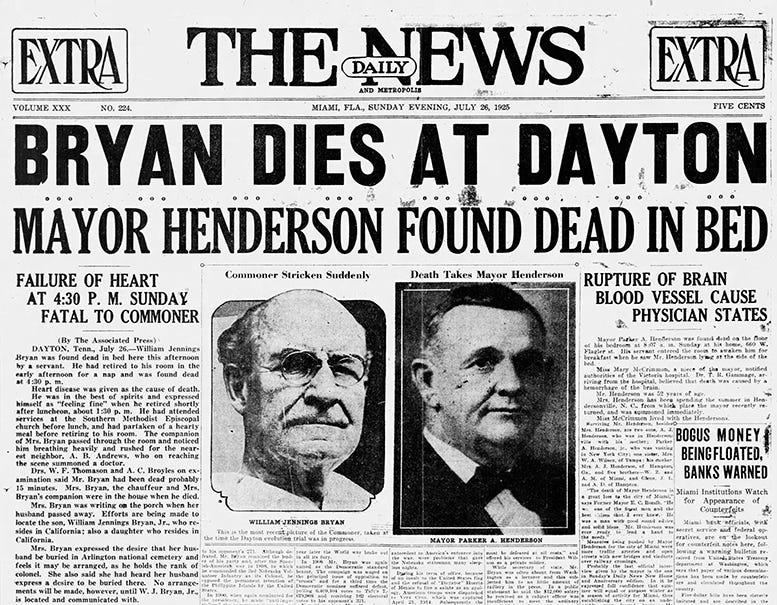Remembering William Jennings Bryan
Reflecting on the Great Commoner's time in South Florida on the anniversary of his passing. William Jennings Bryan died in Dayton, Tennessee, on July 26, 1925.

When subscribers of the Miami Daily News opened up their evening edition on July 26, 1925, they were expecting the front page article to describe the opening of the newspaper’s great new building at 600 Biscayne Boulevard, named the Miami Daily News Tower, that was dedicated earlier that day. However, the subheading on the front page of the paper provided the shocking news of the sudden passing of the mayor of the City of Miami, Parker Henderson Sr., who was found dead in his home that morning. Henderson was 52-years old when he passed away.
The reason that the story of the mayor’s death was not the headline on July 26th was that the top story was reserved to further shock the reader by announcing the unexpected passing of one of Miami’s most popular winter residents, William Jennings Bryan, who was known nationally as the ‘Great Commoner.’ He got this nickname based on how he, and his policy ideas, related to the everyday man and woman. He was known as one of the great orators of his time, and because of his ability to speak and preach, he was relatable to the common man during his time, hence the nickname the ‘Great Commoner.’
Keep reading with a 7-day free trial
Subscribe to Miami History to keep reading this post and get 7 days of free access to the full post archives.



